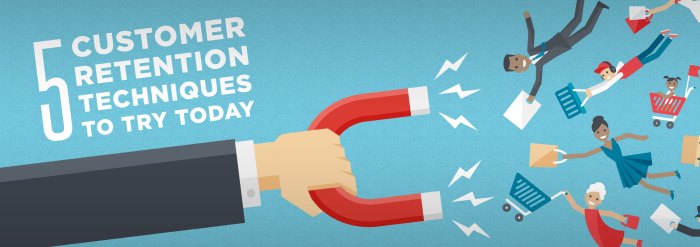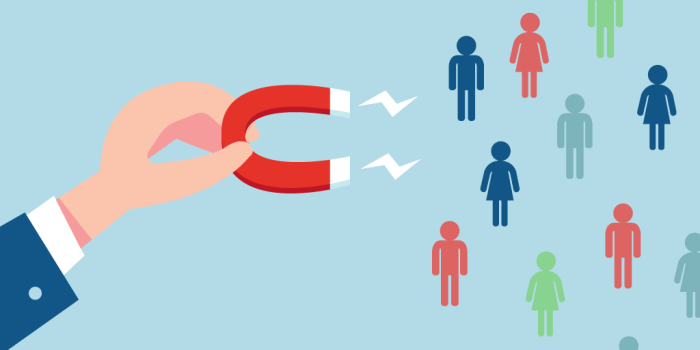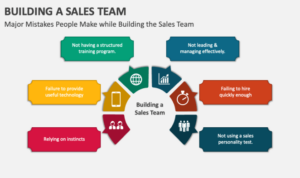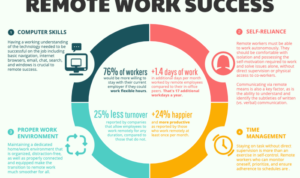Customer retention techniques take the spotlight in the world of business, where success hinges on keeping customers happy and engaged. Dive into this guide filled with expert tips and real-world examples to master the art of retaining valuable clientele.
In the following sections, we’ll explore key metrics, effective strategies, and innovative approaches that businesses can adopt to boost customer retention and drive sustainable growth.
Customer Retention Techniques

Customer retention is crucial for the growth and success of any business. It involves keeping existing customers engaged, satisfied, and loyal to your brand, ultimately leading to repeat purchases and long-term relationships. By focusing on retaining customers, businesses can save on acquisition costs, increase customer lifetime value, and build a strong reputation in the market.
Key Customer Retention Metrics
Tracking specific metrics can help businesses measure the effectiveness of their customer retention efforts. Some key metrics to monitor include:
- Customer Churn Rate: The percentage of customers who stop doing business with your company over a certain period.
- Customer Lifetime Value (CLV): The total revenue a customer is expected to generate throughout their relationship with your business.
- Net Promoter Score (NPS): A measure of customer loyalty and satisfaction based on the likelihood of customers recommending your brand to others.
Impact of Customer Retention on Profitability, Customer retention techniques
Customer retention directly impacts a company’s profitability by increasing revenue, reducing marketing costs, and fostering brand advocacy. Loyal customers are more likely to make repeat purchases, spend more per transaction, and refer new customers to the business. This leads to higher overall profitability and sustainable growth over time.
Successful Customer Retention Strategies
Different industries have implemented various successful customer retention strategies to keep customers engaged and loyal. Some examples include:
- Reward Programs: Offering incentives, discounts, or exclusive perks to loyal customers to encourage repeat purchases.
- Personalized Communication: Sending tailored messages, recommendations, and offers based on customer preferences and behavior.
- Exceptional Customer Service: Providing prompt, helpful, and empathetic support to address customer needs and concerns effectively.
Building Customer Relationships
Building strong customer relationships is crucial for any business looking to retain customers and foster loyalty. Personalized communication, loyalty programs, excellent customer service, and gathering feedback are all essential components in achieving this goal.
Role of Personalized Communication
Personalized communication plays a key role in strengthening customer relationships by making customers feel valued and understood. By addressing customers by name, tailoring messages to their preferences, and providing relevant offers based on their past interactions, businesses can create a more personalized and engaging experience.
Creating a Loyalty Program
– Offer rewards for repeat purchases
– Provide exclusive discounts or promotions for loyal customers
– Implement a points-based system for earning rewards
– Send personalized thank you notes or gifts to show appreciation
Significance of Excellent Customer Service
Excellent customer service is vital in retaining customers as it builds trust, resolves issues promptly, and leaves a positive impression. By going above and beyond to meet customer needs, businesses can create a lasting relationship that keeps customers coming back.
Gathering Feedback from Customers
– Send surveys after purchases to gather insights
– Monitor social media and review sites for feedback
– Encourage customers to leave reviews or testimonials
– Act on feedback promptly to show customers their opinions are valued
Enhancing Customer Experience
Enhancing the overall customer experience is crucial for improving retention rates. When customers have a positive experience with a company, they are more likely to remain loyal and continue doing business with them. This can lead to increased customer satisfaction, repeat purchases, and positive word-of-mouth referrals.
Companies Excelling in Customer Experience
- Apple: Known for its sleek design, user-friendly products, and exceptional customer service.
- Zappos: Offers free shipping, easy returns, and 24/7 customer support, creating a seamless shopping experience.
- Ritz-Carlton: Provides personalized service, attention to detail, and anticipates customer needs to exceed expectations.
Importance of Omnichannel Customer Support
Omnichannel customer support is essential for retaining customers as it allows them to interact with a company through various channels seamlessly. This includes phone, email, chat, social media, and in-person interactions. By providing a consistent and integrated support experience, customers feel valued and cared for, leading to higher retention rates.
Tips to Leverage Technology for Customer Experience
- Implement chatbots or AI-powered tools to provide instant and personalized customer support.
- Use data analytics to understand customer behavior and preferences, allowing for tailored recommendations and communication.
- Offer self-service options such as online portals or mobile apps for easy access to information and account management.
Analyzing Customer Behavior

When it comes to improving customer retention strategies, analyzing customer behavior plays a crucial role in understanding their needs and preferences. By studying how customers interact with your business, you can tailor your approach to better meet their expectations and keep them coming back for more.
The Role of Data Analytics
Data analytics is essential in understanding customer preferences as it allows businesses to gather valuable insights from customer interactions. By analyzing data points such as purchase history, website engagement, and feedback, companies can identify patterns and trends that help them anticipate customer needs. This data-driven approach enables businesses to personalize their offerings and enhance the overall customer experience.
- Utilize customer relationship management (CRM) software to track customer interactions and gather data.
- Implement customer surveys and feedback mechanisms to collect insights directly from customers.
- Use website analytics tools to monitor customer behavior on your digital platforms.
Examples of Customer Behavior Insights
Businesses have successfully used customer behavior insights to increase retention rates. For instance, e-commerce companies often analyze browsing history and purchase patterns to recommend personalized products to customers, leading to higher conversion rates. Similarly, subscription-based services track user engagement metrics to identify at-risk customers and offer targeted promotions to prevent churn.
- Amazon uses customer data to provide personalized product recommendations based on previous purchases and browsing history.
- Netflix analyzes viewing habits to suggest content that aligns with users’ preferences, increasing user engagement and retention.
- Starbucks rewards program utilizes customer transaction data to offer personalized promotions and discounts, driving repeat visits and loyalty.
Segmenting Customers for Targeted Retention Efforts
Segmenting customers based on behavior allows businesses to create targeted retention strategies that cater to specific customer needs and preferences. By grouping customers into segments such as high spenders, frequent buyers, or inactive users, companies can tailor their marketing campaigns and promotions to address each group’s unique characteristics.
- Use RFM (Recency, Frequency, Monetary) analysis to categorize customers based on their purchase behavior and loyalty.
- Create personalized email campaigns targeting specific customer segments with relevant offers and recommendations.
- Implement loyalty programs that reward customers for their engagement and incentivize repeat purchases.





